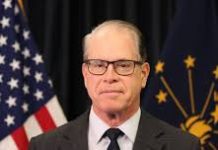At the time of European settlement, Indiana rested on the eastern edge of vast grasslands called prairies. Though much reduced in size, grassland habitats support a diversity of plant and animal species, including birds.
In the absence of trees, grassland birds build their nests on the ground, hidden in the dense grass. Insects make up a large part of their diet. As a result, many grassland songbirds are migratory, heading south in the winter to find insects. Songs range from the insect-like buzz of the grasshopper sparrow to the sing-song call of the meadowlark (which was once described as sounding like “laziness will KILL youâ€).
With the arrival of settlers, much of Indiana’s native grasslands were converted to agriculture. Grassland bird populations declined. Birds such as the Henslow’s sparrow became a Federally Endangered species.
Today, several Indiana State Parks manage and restore grasslands for birds and other species. Prophetstown, Potato Creek, Pokagon, Shakamak, Summit Lake, Patoka Lake and the Upper Wabash reservoirs manage grasslands. As a result, birds such as the Henslow’s sparrow can once more be heard singing in their Indiana home.
Learn about Indiana’s Grasslands for Gamebirds and Songbirds Program, managed by DNR’s Division of Fish & Wildlife at wildlife.IN.gov/9467.htm.




